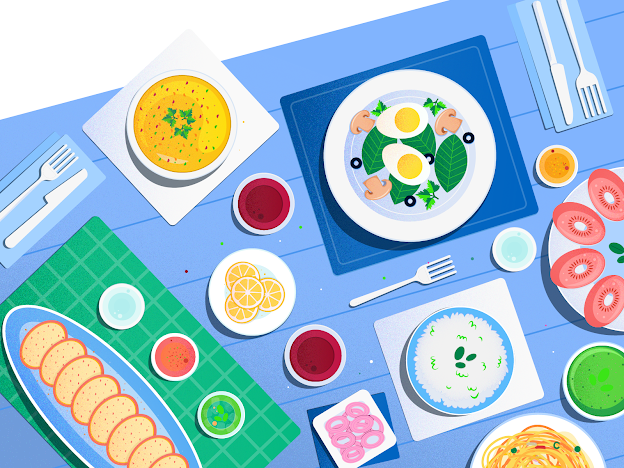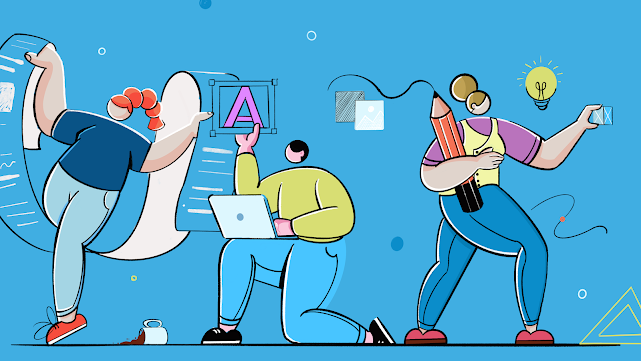How to craft an attention-grabbing illustration?
In the present era, we’re constantly bombarded with an abundance of visual content on a daily basis,
as advertisers, marketers, and designers are all vying for our attention.
as advertisers, marketers, and designers are all vying for our attention.
Designers strive to create the best designs by implementing design elements and techniques.
With so much happening in our lives and the world around us, how can we distinguish ourselves and capture their attention with our designs?
Today we will discuss "why certain illustration designs catch our attention while others fail to do so?"
Designing illustrations isn’t as easy as we might think. There are many steps that must be followed when immersing oneself in the process.
So,
Let’s explore the 'attention-grabbing illustrations technique now'
1. CREATE AN ILLUSTRATION STYLE
Many young artists tend to approach style selection backward. They see impressive, most-liked illustrations and try to imitate the qualities that make them impressive, instead of their own
unique style.
My suggestion to all of you is to go out and explore. It’s wonderful that you are exploring your surroundings. Rather than staying cooped up inside and struggling to come up with ideas by overthinking.
So always begin by considering the purpose of your illustration, then determine the most effective technique to achieve it. And finally, enhance the visual appeal of those techniques.
Ultimately, you’ll discover an appealing design with excellent style, color, and contrast.
However, achieving this often requires experimentation.
2. RESPECT OTHERS' IDEAS AND AVOID PLAGIARISM
Instead, consider using their ideas as a springboard for your own creative exploration. Remember, true creativity involves stealing like an artist.
To find your best idea, it’s essential to keep practicing and refining your drawing skills rather than relying on a single attempt.
I offer two or three unique ideas for every final illustration I create. But if you are a beginner you might need more practice to improve your illustration skills. It’s important to explore and practice regularly.
3. USE BRIGHT COLORS
You have likely come across this information frequently in your reading. Color is the soul of visual arts.
Imbued by the artist into their creation and holds great power. Color impacts emotions strongly.
Bright shades of red, yellow, and green provide a sense of energy and alertness, but can also be harsh on the eyes. They attract attention and stand out from their surroundings. And even studies indicate that lighter colors evoke positive emotions, while darker colors tend to be associated with negative emotions.
Using bright colors can enhance the contrast between the content and background, making it easier to differentiate them.
See the difference below 👇
As an illustrator, your primary goal is not to showcase your technical skills but to communicate your intended message clearly and effectively to your audience, avoid adding unnecessary elements or details to your illustrations, as they can make distract from your intended message.
Remember the aim is to create a simple and impactful illustration that effectively conveys the emotions and information to the viewer.
Simplicity doesn’t always equal clarity. Sometimes a complex drawing can still convey its message clearly, while a simple one may be difficult to compare. The best illustrations are clear and concise, regardless of their complexity. More important is to convey the message to your audience.
you can see the differences in the below image 👇
5. ENHANCE REALISM WITH SHADOW, LIGHTING, AND TEXTURE
In the illustration, texture refers to both the perceived and actual feel of the piece. And shadows and highlights add depth and texture, making elements of an illustration appear more tactile. For example, natural textures like grass, tree, flowers, water waves, and many others can beautifully enhance designs.
Using just shadows and highlights can add depth to a composition, these simple techniques can have a pleasing impact. Light and shadow serve multiple purposes, including the creation of a visually appealing composition that either satisfies or keeps the eye moving across the composition.








Best article
ReplyDeleteThanks soo much or your knowledge needs more for those who like me are interested in the similar field 👍🏻👍🏻🤗🤗
ReplyDelete*for
ReplyDeleteThis article helps a lot
ReplyDeleteGreat article mam
ReplyDeletegreat initiative 🫡
ReplyDeleteThanks
Delete